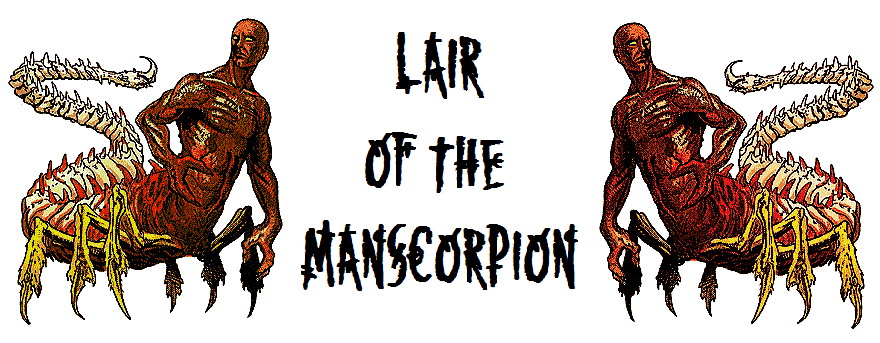As promised, here's some brief entries for known points of interest on the peninsula, in which players in my hex crawl setting will start the game. In addition to these known points, there are rumours of a village of Jaguar Men and the ruined city of an ancient race, both hidden somewhere in the dense jungle. Once again: the dark green is jungle, the brown is hills, the orange is plains, the yellow is desert, and the gray tiles with vaguely mountainish triangles on them are mountains.
I'll detail the nearby islands (as can be seen in the larger map from last post) in a future post.
0173) Village of Xochipillica, named for Xochipilli, the Prince of Flowers, god of art, beauty, and ecstatic intoxication. He has blessed the village with an endless garden of flowers which sate all thirst and hunger, as well as possessing strong hallucinogenic properties. Village residents spend all day laying around in various states of thrall to this divine drug. To harm a resident of Xochipillica is to bring the wrath of the god upon oneself, and so the village remains unmolested by the forces of the Huacal Empire (see 0223), of whom the villagers are still nominally subjects. Visitors will be offered some of the flowers; to refuse is to offend the god, but generally not fatally. Those partaking must save vs. spell or become hopelessly addicted, unable to leave Xochipillica.
0208) Tower of Magnus Für, the biomancer. A foreign devil from some far southern shore, Magnus has declared himself independent of the Huacal Empire, and his tower a sovereign kingdom unto itself. Several entirely decimated armies later, the Empire now tacitly accepts his decree. The sorcerer appears to have no interest in anything but the blasphemous and arcane experiments he conducts within his tower; he has not been seen at large in some fifty years. He is rumoured to worship old gods, much older than the gods of the Huacal.
0223) City-state of Xetlal. Together with Huitzilopochtlilan (0260) and Miquixco (0241), comprises the Huacal Empire, the dominant military and cultural force on the peninsula, and much of the mainland. Xetlal is a city of stepped pyramids, as is the style of the region. Unlike the other two cities of the Empire, Xetlal does not expressly outlaw sorcery, and is rumoured to be home to a quiet enclave of practitioners of the foulest arts, taking advantage of the relative tolerance.
0241) City-state of Miquixco. A necropolis where all the noble dead of the Empire are interred, and as such it is a city under the patronage of Mictlanteuchtli, the god of death and the underworld. The blood-ocean can only be reached by sailing from Miquixco; venturing out from any other point, one always finds oneself circling back to the waters of the peninsula after a certain point. This fact lends credence to the popular theory that the ocean is an extension of Mictlanteuchtli's domain, called Mictlan, into the world of the living.
0260) City-state of Huitzilopochtlilan, named for Huitzilopochtli, the god of war and human sacrifice. While the three cities of the Empire are nominally equal partners, the supreme military might of Huitzilopochtlilan makes it the de facto leader. Great and bloody sacrifices (of prisoners, criminals, or willing fanatics) for the war-god are held here monthly, or more frequently if a great battle is imminent. Sorcery and the worship of strange gods is absolutely forbidden within the city (and thus, nominally, within the Empire; Miquixco goes along with this, but Xetlal is more lax when it comes to sorcery, though not the gods). A dedicated class of Inquisitor-Priests works to root out all magicians and blasphemers.


No comments:
Post a Comment